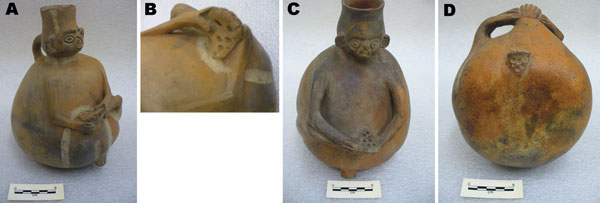Volume 17, Number 5—May 2011
Historical Review
Evidence of Tungiasis in Pre-Hispanic America
Figure 3

Figure 3. Two globular Chimu huacos found in Pachacamac, a sandy land area in northern Lima. Each person is examining the soles of the feet, on which multiple punch-out lesions can be detected. Panels B and D are close-up views of the feet of the huacos shown in panels A and C, respectively. Catalogs B/8853 and B/8854, courtesy of the Department of Anthropology, American Museum of Natural History.
Page created: August 08, 2011
Page updated: August 08, 2011
Page reviewed: August 08, 2011
The conclusions, findings, and opinions expressed by authors contributing to this journal do not necessarily reflect the official position of the U.S. Department of Health and Human Services, the Public Health Service, the Centers for Disease Control and Prevention, or the authors' affiliated institutions. Use of trade names is for identification only and does not imply endorsement by any of the groups named above.